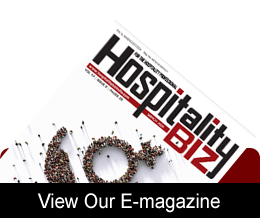Gone is the cookie-cutter approach to online marketing. Hotel marketing today is all about how personal you can get.
Competing for guests online is now harder than ever, with so many options out there for them to choose from. Offering a personalised and optimised experience on your website is one way to make guests feel special, even before they step into your hotel.
Let’s look at a few ways to achieve this personal and optimum experience on your website.
1. Showcasing best value.
A staggering number of OTA users believe they’ll find better prices or deals on an OTA. Price is one of the main reasons guests use OTAs to book. Yet, the online hotel prices are equal or cheaper than in OTAs. To help overcome this conversion barrier, showcase your direct price along with real-time OTA prices on your website. STAAH’s Watch My Rate feature allows hoteliers to display prices of up to five OTAs on their website (live price comparison).
2. Provide a personalised landing experience.
For your paid media, the website page a user lands on can be controlled. Make sure you create a landing experience that matches the messaging and media channel they arrive from. For instance, someone coming from a Google search looking for “rooms in Auckland” should probably land on a pricing page as compared to a website visitor from Facebook or Instagram who is inspired by your post. Landing them on a homepage or pages specific to the content of the post will be a better user experience.
3. Tailor messaging based on website interactions.
Once users have interacted with your booking widget, you can tailor messaging through pop-ups or results to showcase packages and experiences specific to their search. For instance, if someone has chosen a long stay, offer them a discount or value-add through “free” facilities. If someone has chosen to book over a specific time period like Christmas or school holidays, show them rates and packages specific to that time period.
4. Recognise and reward repeat visitors.
Remarketing to website visitors is perhaps the lowest-hanging fruit for conversion. If someone has visited your website for the second time, their intent to book is high and you must reward them through additional discounts or value-added propositions to get them over the line. Pop-ups are a commonly used user interface for such interactions.
5. Targeting based on user profiles.
If you are running a loyalty programme or have other means to gather and store user data (target audience) on your website, leverage this information to customise what you offer. For instance, what you sell to a business guest versus a family are very different. When you understand the user, the messages you show them on your website can – and should – differ.
6. Basic personalisation.
Some basic website experiences can be improved without understanding personal user journeys. These include geo-based targeting or language. Serving your website content in Bahasa to an Indonesian audience is likely to be more effective than English, including tailoring of prices to local currency.
7. Predictive personalisation.
Whilst most of the above personalisation of the website experience relies on basic cookies being set, for something more enhanced such as dynamically changing or delivering content based on user actions on the website requires machine learning and advanced set-ups to be established.
8. Exit intent tools.
Catch guests on the way out of your site with an exit strategy. This is important as it’s your last frontier (and line of communication) to keep a customer on your website and within the booking funnel. An exit pop-up can help re-engage or reignite the intent of guests.
To sum it up
The above is just the tip of the iceberg in terms of tools available to bolster your website’s booking experience and tailor it to the user. In fact, in the modern digital consumer journey, your cross-channel communication is equally important to drive up conversions. How you remarket to guests using email or other channels is imperative. The goal should always be to optimise the booking journey, the website being a part of the whole journey
Are you an accommodation provider who needs a website?
Find out how STAAH InstantSite can help you set up a basic user-friendly website. Schedule a Free Demo here




